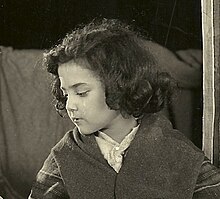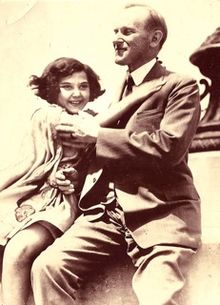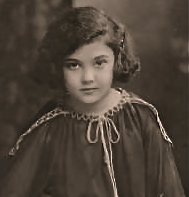| Revision as of 04:46, 29 June 2013 editAilemadrah (talk | contribs)299 edits Corrected spelling og← Previous edit | Revision as of 15:55, 1 July 2013 edit undoGraphium (talk | contribs)Extended confirmed users, Pending changes reviewers, Rollbackers23,154 edits Declining submission: subject appears to be a non-notable person (AFCH)Next edit → | ||
| Line 1: | Line 1: | ||
| {{AFC submission|||ts=20130629023909|u=Ailemadrah|ns=2}} | {{AFC submission|d|bio|declinets=20130701155504|decliner=Arctic Kangaroo|ts=20130629023909|u=Ailemadrah|ns=2}} | ||
| {{Infobox person | {{Infobox person | ||
| | name = Miriam Battista | | name = Miriam Battista | ||
Revision as of 15:55, 1 July 2013
 | This article, Miriam Battista, has recently been created via the Articles for creation process. Please check to see if the reviewer has accidentally left this template after accepting the draft and take appropriate action as necessary.
Reviewer tools: Inform author |
Miriam Battista (July 14, 1912 – December 22, 1980) was an American actress known principally for her early career as a child star in silent films.
Early life and early career
Miriam Battista was born Miriam Caramella Josephine Battista in 1912 in New York, New York, to Raphael Battista and Clara Rufolo (born Cleonice Rufolo), both Italian immigrants. She began performing in 1916 at the age of four in A Kiss for Cinderella, a Broadway play starring Maude Adams, in which she had an uncredited role as the youngest of a group of war orphans. Other Broadway appearances followed, including small roles in Daddy Long Legs with Henry Miller in 1917, A Doll’s House with Alla Nazimova in 1918, and Daddies with Jeanne Eagels in 1919.

Battista broke into silent films in 1918 with a credited role in Nazimova’s Eye for Eye, playing the little sister of Nazimova’s character. That led to her being cast by director Frank Borzage as the crippled girl Minnie Ginsberg in Humoresque, the role which made her a star. The author Elinor Glyn was so impressed by her performance that she wrote a screenplay for Battista, whom she called “the greatest actress of the screen.” (This screenplay was never filmed.) Battista subsequently appeared in many other silent films, especially in roles that called for her to cry on camera. In an unpublished memoir, she stated “I had no trouble crying. Tears came easily and if they didn't, my mother took me behind the scenes and spanked me until I cried.” Battista also toured the vaudeville circuit, playing Juliet in the balcony scene from Romeo and Juliet with child actor Charles Eaton. After her mother’s death in 1924, her career stalled.

Career as a adult
In 1931, Battista took leading roles in several Italian-language films made in New York, including Santa Lucia Luntana and Così è la vita. She also returned to the Broadway stage, appearing in The Honor Code in 1931. Among other Broadway appearances during the next decade, she had a singing role in the Ziegfeld musical Hot-Cha! with Bert Lahr, played opposite Humphrey Bogart in Our Wife, and enjoyed an unusually long run in the comedy No More Ladies. She was generally unlucky in the Broadway productions she chose, which usually ran for only a few performances. However, she found frequent work in summer stock and in the road companies of successful Broadway productions like The Women.
In 1934, Battista married dancer Paul Pierce. They divorced slightly over a year later in 1935. In 1938, she eloped with writer Russell Maloney. Battista’s writing talent was recognized when The New Yorker published her short story "No Sugar Please" in the April 20, 1940 issue. She and Maloney had a daughter, Amelia, in 1945. They collaborated on several projects, including an English translation of Die Fledermaus for the Philadelphia Opera Company (1943), a television talk show called "The Maloneys" on the DuMont Television Network (1947-1948), and the book and lyrics for a musical, Sleepy Hollow, which cost $230,000 and ran for only 12 performances (June 3, 1948 - June 12, 1948). Maloney died three months later on September 3, 1948. On December 14, 1948, Battista married Lloyd Rosamond, a radio producer and long-time friend. She and her daughter moved with him to Los Angeles in 1960, where he died in 1964. After her husband’s death, Battista moved back to New York City, where she died of complications from emphysema on December 22, 1980.
- Certificate of baptism, Church of the Holy Cross, New York, NY. Copy from Baptismal Register dated June 3, 1970, in the possession of Amelia Rosamond Hard, Miriam Battista's daughter.
- Internet Broadway Database: http://www.ibdb.com/production.php?id=7778
- Internet Broadway Database: http://www.ibdb.com/production.php?id=6969
- Internet Broadway Database: http://www.ibdb.com/production.php?id=8703
- Internet Broadway Database: http://www.ibdb.com/production.php?id=8733
- For a complete filmography, see http://www.imdb.com/name/nm0061440/
- Fox, Charles Donald (1925). Famous Film Folk.
- Patterson, Ada (July 1922). "Eight years old and in the phone book" (PDF). Photoplay magazine: 27 and 113.
- Unpublished memoir in the possession of Amelia Rosamond Hard.
- http://www.varietyultimate.com/archive/issue/WV-04-16-1924-46
- A complete listing of Battista’s adult stage work can be found at the Internet Broadway Database: http://www.ibdb.com/person.php?id=31280
- Dr. David S. Shields, McClintock Professor at the University of South Carolina, on his website Broadway Photographs: http://broadway.cas.sc.edu/index.php?action=showPerformer&id=106
- ^ From Battista’s resume written in 1952, in the possession of Amelia Rosamond Hard.
- http://query.nytimes.com/gst/abstract.html?res=F70D1EF7385410728DDDAE0A94DA415B8084F1D3
- Notice in Variety, November 11, 1938: http://www.varietyultimate.com/archive/issue/DV-11-11-1938-6
- http://www.newyorker.com/archive/1940/04/20/1940_04_20_040_TNY_CARDS_000180306
- This birth record is sealed, in accordance with New York state law, because Amelia Maloney was legally adopted by Lloyd Rosamond.
- http://news.google.com/newspapers?nid=1946&dat=19431025&id=F3ctAAAAIBAJ&sjid=lpgFAAAAIBAJ&pg=3365,4192468
- http://www.ibdb.com/production.php?id=2012
- Certified photostatic copy of Certificate of Death from the Bureau of Records and Statistics of the Department of Health of the City of New York, dated September 9, 1948. In the possession of Amelia Rosamond Hard.
- Marriage certificate dated December 14, 1948, New York, signed by Rabbi Joseph Wise, in the possession of Amelia Rosamond Hard.
- Certified copy of Certificate of Death from the Registrar-Recorder, Los Angeles County, California, dated October 2, 1964. In the possession of Amelia Rosamond Hard.
- Obituary in the New York Times, December 27, 1980: http://query.nytimes.com/gst/abstract.html?res=F70D1EF7385410728DDDAE0A94DA415B8084F1D3
